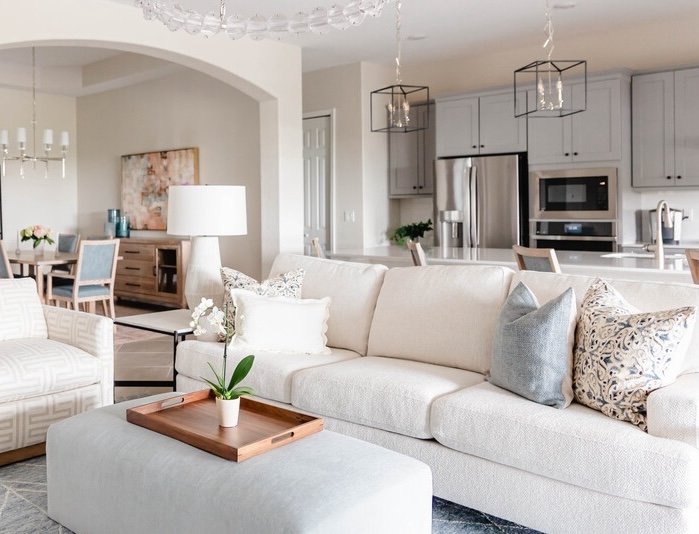Adding houseplants to your interior is a great way to bring life and freshness to your home. During the pandemic I became sort of a collector of houseplants. Caring for the plants was soothing to me in uncertain times and every new leaf was a reward of my hard work. At one point I had over 75 plants so I have officially earned the title of crazy plant lady. Here are five easy-to-care-for houseplants that will add life and warmth to your home decor, along with some simple tips on how to care for them:
1) Snake Plant
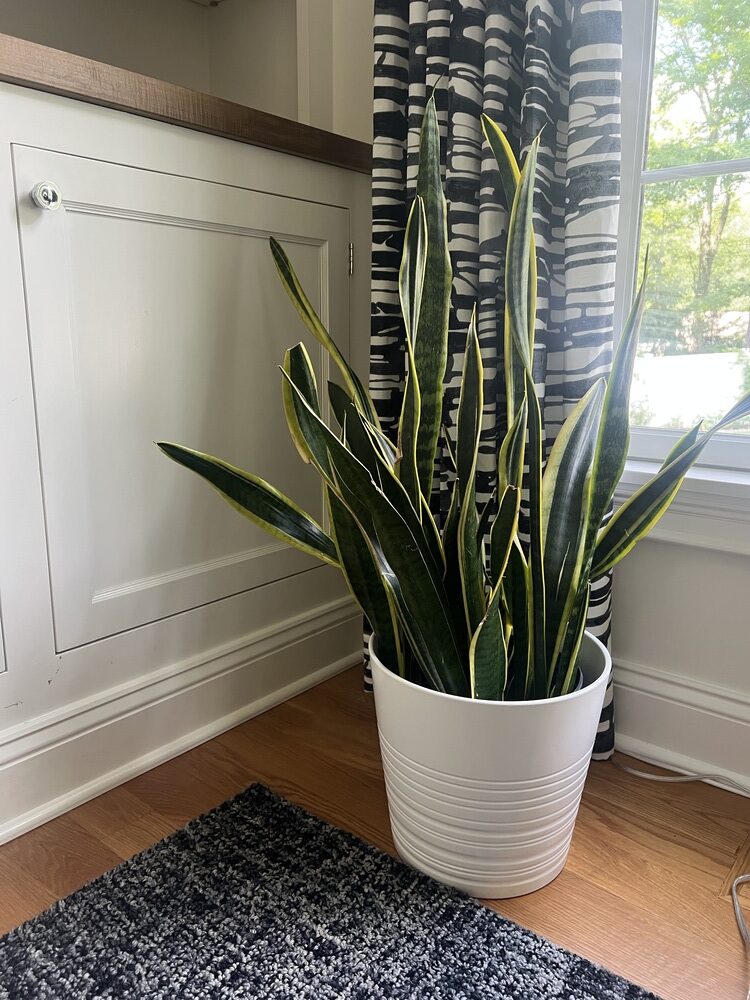
These guys are a staple in any interior design project. They are sculptural, tolerate low lighting conditions and they don’t need to be watered a lot (think once every 2-3 weeks depending on the time of year).
Snake plants have long, stiff leaves that are thick and upright, resembling the shape of a snake, hence the common name. The leaves can vary in color and pattern, with common varieties having green leaves with yellow edges or white and green variation. Some cultivars even have cylindrical or twisted leaf forms.
These plants are highly valued for their ability to tolerate a wide range of light conditions, including low light, making them suitable for indoor environments. They are known for their air-purifying qualities, as they remove toxins like formaldehyde, xylene, and benzene from the air. Snake plants are also relatively low-maintenance and are drought-tolerant, requiring infrequent watering.
In addition to their aesthetic appeal and air-purifying properties, snake plants are considered hardy and resilient. They can grow in various soil types and do well in both humid and dry conditions. Snake plants are often recommended for beginners or individuals with limited gardening experience due to their adaptability and forgiving nature. In other words, these guys are relatively hard to kill, unless you water them too much. Make sure that soil is bone dry before you add more water and you will keep them happy.
Overall, snake plants are popular houseplants that provide both visual interest and potential health benefits by improving indoor air quality.
Care: The snake plant thrives in bright, indirect light, but can tolerate low light conditions.
Watering: Allow the soil to dry out between waterings. Water sparingly and avoid overwatering.
Additional care: Snake plants are known for their air-purifying properties and can tolerate a wide range of conditions.
2) Pothos & Philodendron
My husband has had a golden pothos since his sophomore year in college and its still thriving. So if a house full of college dudes can keep these alive anyone can.
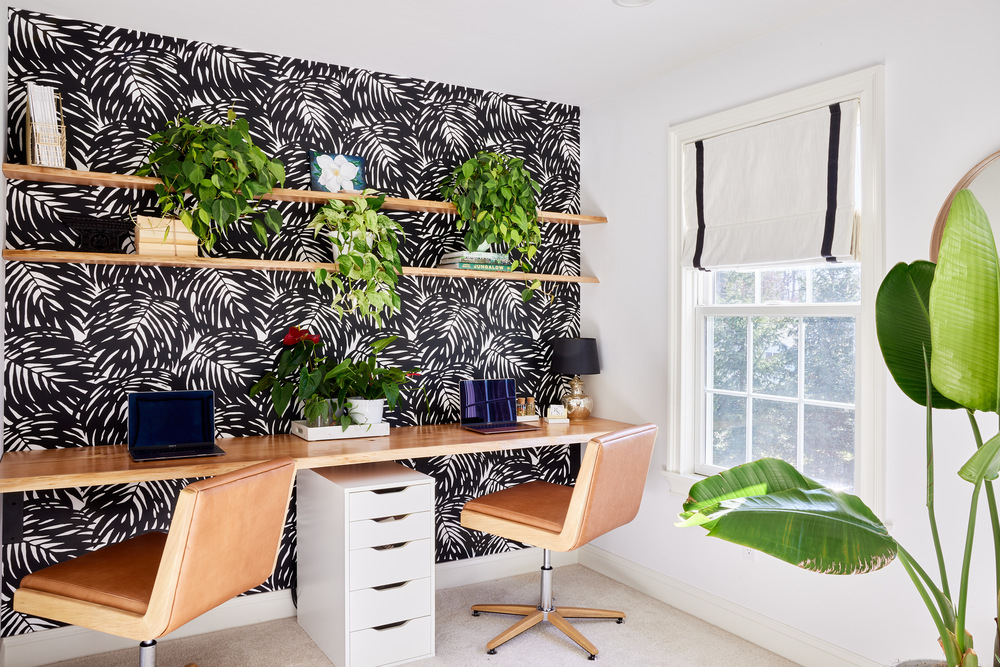
Pothos & philodendrons plants have heart-shaped leaves that can vary in color, including various shades of green, yellow, and even variegated patterns with white or golden markings. The leaves grow on long, trailing stems that can cascade down from hanging baskets or climb up a support structure like a moss pole or trellis.
One of the reasons these plants are favored as houseplants is their ability to thrive in a wide range of lighting conditions, from low to bright indirect light. They are also relatively tolerant of irregular watering and can withstand periods of drought. These plants are known to purify the air by removing certain toxins, making them a popular choice for improving indoor air quality.
These plants are relatively low-maintenance and can be propagated easily. Stem cuttings can be rooted in water or soil, and new plants can be grown from these cuttings. Pothos & philodendron plants can be a great choice for both beginners and experienced plant enthusiasts due to their forgiving nature and beautiful foliage.
Light: Thrives in medium to low light conditions, but can tolerate brighter light.
Watering: Water when the top inch of soil feels dry. Avoid overwatering as it can lead to root rot.
Additional care: Pothos is a trailing vine that looks great in hanging baskets. It can also tolerate occasional neglect.
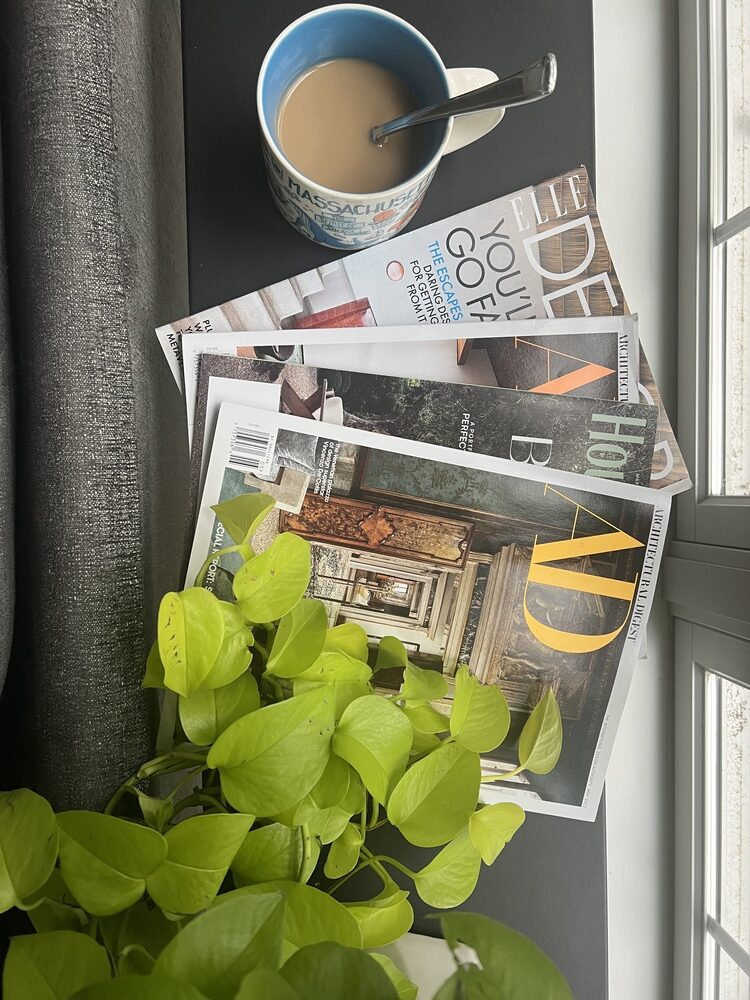
3. ZZ Plant (Zamioculcas zamiifolia):
ZZ plants are the epitome of set it and forget it when it comes to plant care. You shouldn’t water these guys any more than you pay your rent or mortgage. I water them well the first of every month, then I give my dog his heart worm medicine and any other of those first of the month chores.
The ZZ plant features thick, waxy, dark green leaves that are shiny and smooth. The leaves are composed of several leaflets that grow on opposite sides of the stem, giving it a feather-like appearance. The plant has an upright growth habit and can reach a height of about 2 to 3 feet. One of the main reasons for the popularity of the ZZ plant is its ability to thrive in low-light conditions and tolerate neglect. This is why I love these guys, your darkest spaces (think rooms with north facing windows) need a little green too! It is known for its resilience and can survive in various environments, making it an excellent choice for beginners or those with limited gardening experience.
- Light: Can tolerate low light conditions but prefers bright, indirect light.
- Watering: Allow the soil to dry out completely between waterings. Overwatering can cause root rot.
- Additional care: ZZ plants are known for their resilience and can tolerate irregular watering and low humidity.
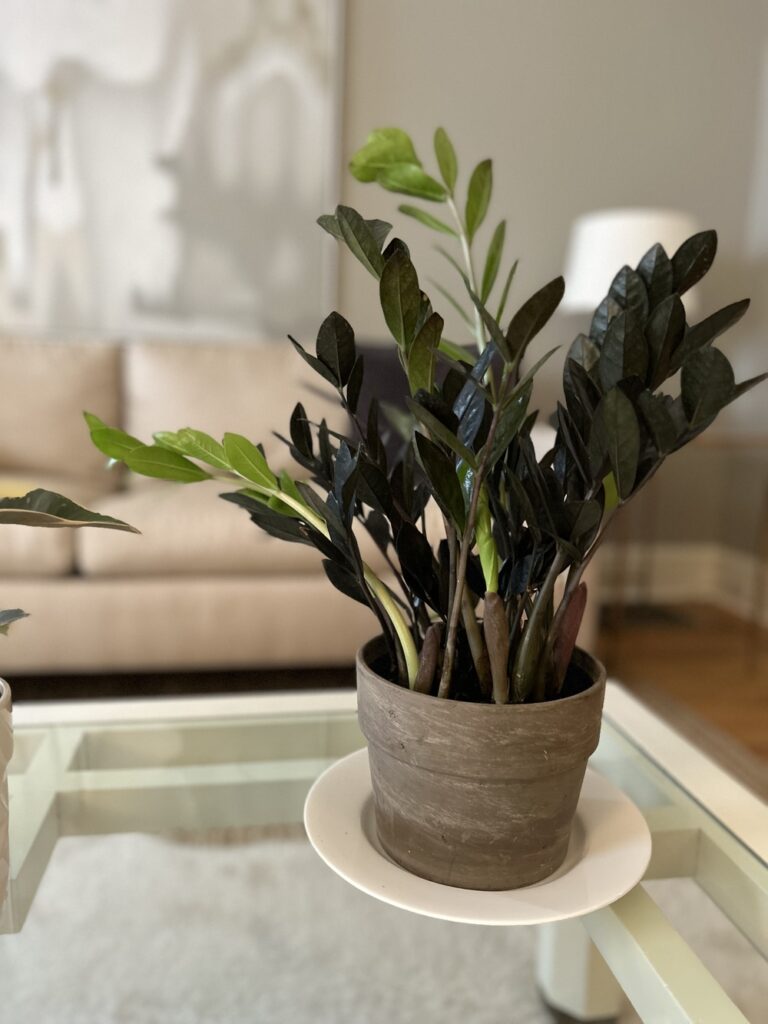
4. Spider Plant (Chlorophytum comosum):
If you grew up in the 80’s you are familiar with this one and for good reason, they are beautiful and easy care, they are also easy to propagate so I feel like everyone and their mother had one back then.
Spider plants have long, arching leaves that are typically green with white or cream-colored stripes running along the edges. The leaves are slender, sword-shaped, and can grow up to 12-24 inches long. The plant produces long, wiry stems that bear small, white flowers, which later develop into little baby plants or “spiderettes” at the ends. You can put these spiderettes in water and they will develop roots and you can have a whole new spider plant.
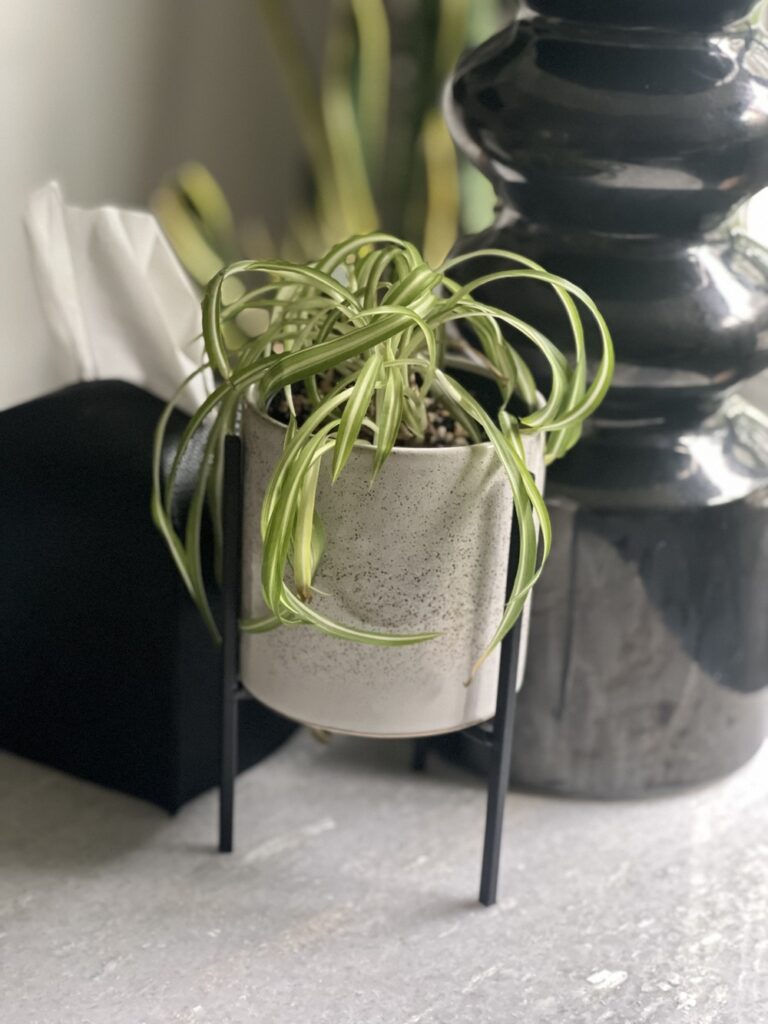
- Light: Thrives in bright, indirect light, but can tolerate lower light conditions.
- Watering: Keep the soil evenly moist, but not soggy. Spider plants prefer to dry out slightly between waterings.
- Additional care: Spider plants produce “spiderettes” or baby plants that can be propagated and grown into new plants.
5: Peace Lily (Spathiphyllum):
These are super common and always available at even the grocery store. What I like about them besides the fact that they are beautiful is that they can be a little dramatic. When they are thirsty they faint, and look like they are dead, but give them some water and a few hours and they perk right back up. So they are kind of hard to mess up unless you ignore the faint.
Peace lilies are characterized by their large, glossy, dark green leaves that grow in an upright fashion. The plant produces beautiful white flowers that resemble the shape of a calla lily. The flowers are surrounded by a white or green leaf-like structure called a spathe, which adds to their visual appeal.
One of the notable features of peace lilies is their ability to thrive in low light conditions, making them well-suited for indoor environments with limited natural sunlight. They are often chosen as houseplants because of their relatively low maintenance requirements.
Peace lilies have been shown to have air-purifying properties, as they are effective in removing common indoor pollutants like formaldehyde, benzene, and carbon monoxide from the air. This makes them an excellent choice for improving indoor air quality.
- Light: Thrives in medium to low light conditions, but can tolerate brighter light.
- Watering: Water when the top inch of soil feels dry. Drooping leaves indicate that it needs watering.
- Additional care: Peace lilies are known for their elegant white flowers. They can also help improve indoor air quality.
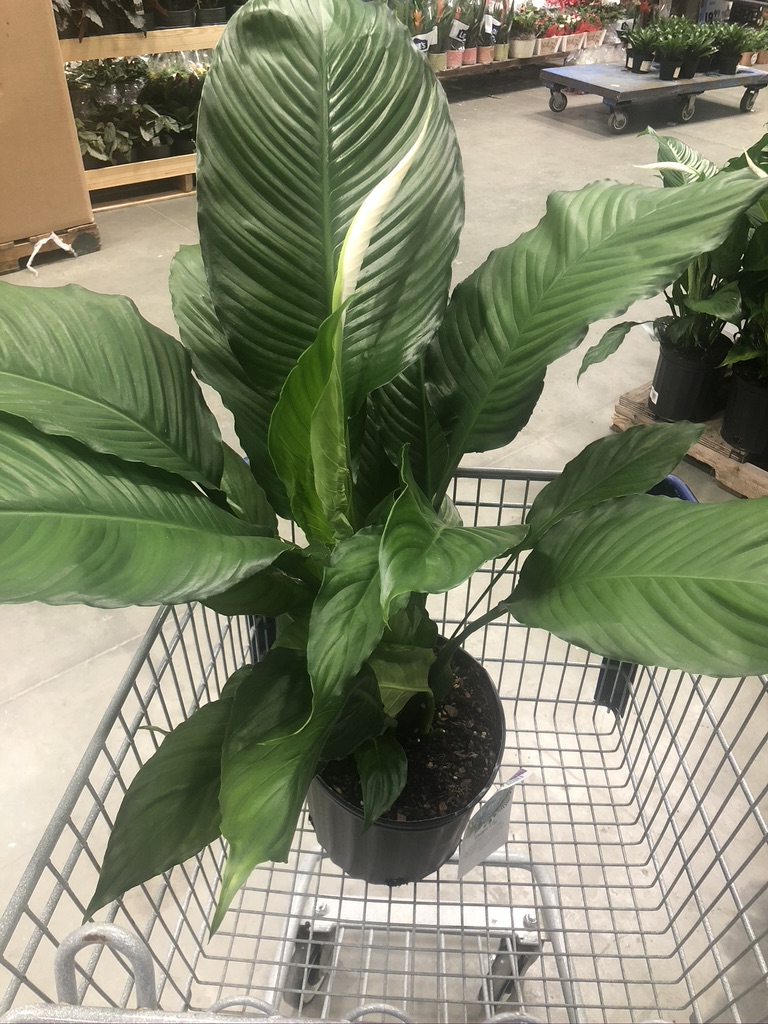
Plant Styling in the Wild
Here are some examples of how we style with plants in our projects. For a little inspiration consider adding some greenery to your space. Feel free to visit our website to see the full projects.
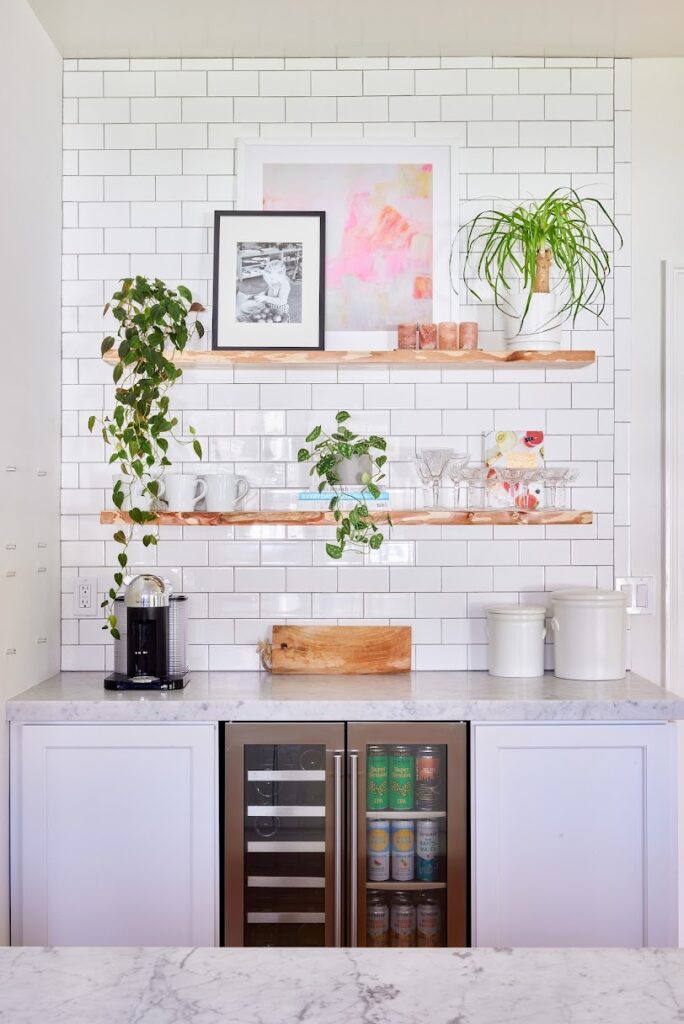
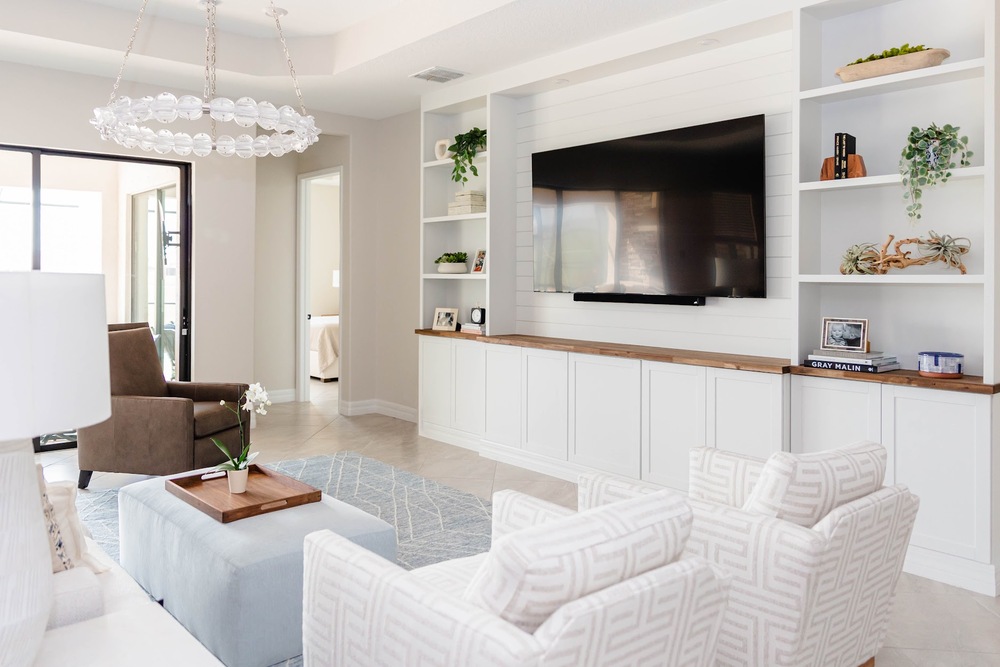
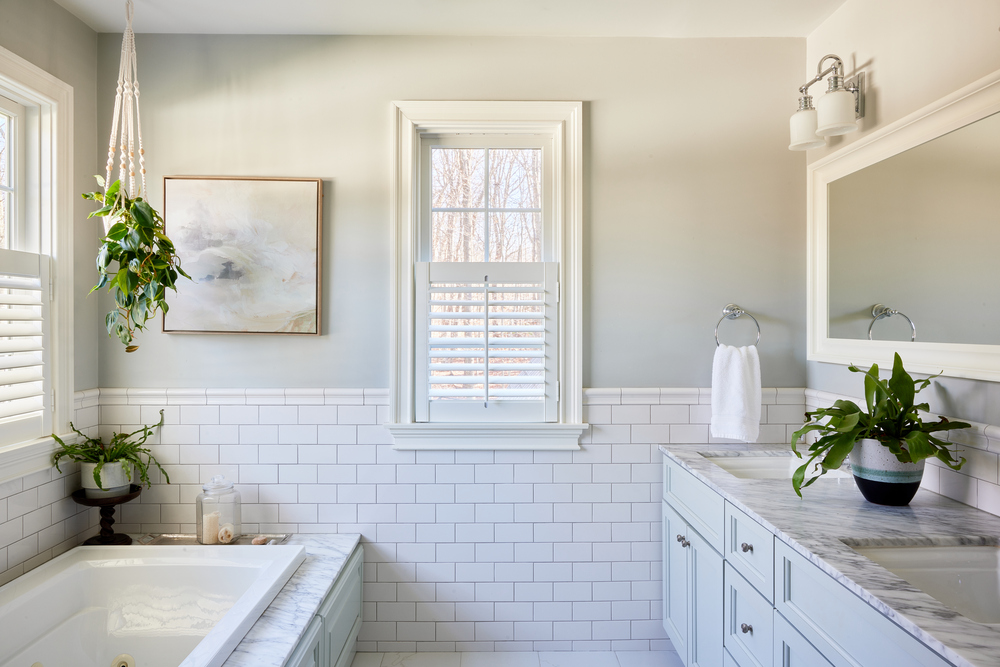
What is your favorite plant? Tell us in the comments! Do you love the sculptural snake plant or the luscious pothos?
Are you planning your own dream home and need some guidance on how to make the project come together? Or are you exhausted by all the little details you have to decide on? We can help. As you can see we practice interior design in Ridgefield, CT and beyond. Let’s have a conversation and bring your dreams to reality. Call us for a free discovery call today. You can also follow us on Instagram to see our daily updates!

